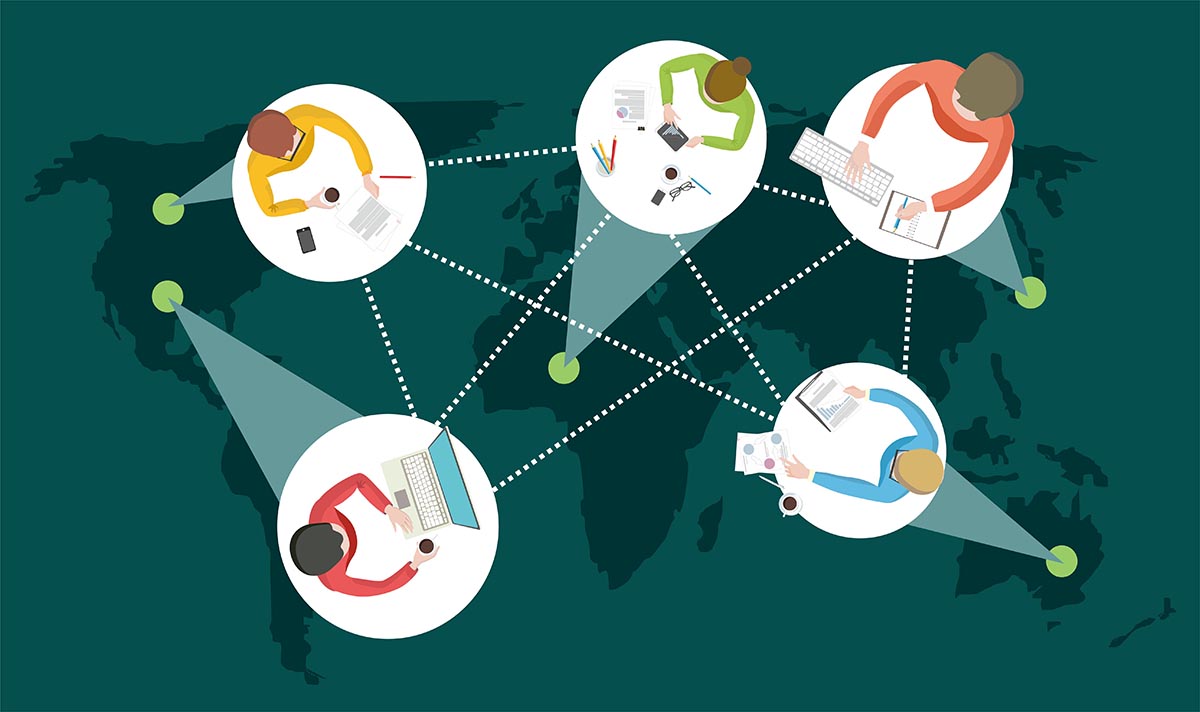With the rise of digital transformation, remote work has become increasingly common in various industries worldwide. Managing a remote team effectively is essential to maintaining productivity, employee engagement, and overall project success. While remote work offers flexibility, it also presents unique challenges such as communication barriers, lack of physical interaction, and difficulties in monitoring team performance. However, with the right strategies in place, managers can foster productivity and cohesion in a remote working environment. Here’s how:
1. Clear Communication Channels
Effective communication is the cornerstone of managing a remote team. Without the luxury of face-to-face interactions, clear, timely, and transparent communication becomes critical. Managers should establish specific channels for different types of communication:
- Daily updates and quick questions: Tools like Slack or Microsoft Teams can facilitate instant messaging, allowing team members to ask quick questions, share updates, or collaborate on urgent tasks.
- Project management discussions: For more structured conversations related to project progress, tools such as Trello, Asana, or Jira can help track tasks, deadlines, and deliverables. This ensures that everyone is aligned with project goals and knows their responsibilities.
- Regular video meetings: Video conferencing tools like Zoom or Google Meet allow for face-to-face interaction, which helps build team camaraderie and trust. These meetings can include daily or weekly check-ins to ensure that everyone is on the same page and any obstacles are addressed promptly.
Managers should also encourage open communication and ensure team members feel comfortable sharing their thoughts or concerns. A culture of transparency reduces misunderstandings and creates a sense of inclusion.
2. Set Clear Expectations and Goals
In a remote work setting, it’s easy for tasks and responsibilities to become ambiguous. To prevent this, managers must set clear expectations regarding work hours, deadlines, communication protocols, and key performance indicators (KPIs).
Using tools such as SMART goals (Specific, Measurable, Achievable, Relevant, Time-bound) can help outline project objectives clearly. Each team member should understand not only their tasks but also how their work fits into the overall project goals. Setting these expectations early on and reinforcing them regularly ensures accountability and a shared understanding of success.
3. Use Collaborative Tools for Seamless Workflow
In a remote setting, collaborative software tools play an essential role in maintaining team productivity. These tools should be selected based on the team’s needs and workflow. Commonly used tools include:
- Document sharing: Google Docs or Microsoft OneDrive enable real-time collaboration on documents, allowing team members to edit and comment on files simultaneously.
- Task management: Platforms like ClickUp, Monday.com, or Notion allow for task assignment, progress tracking, and deadline monitoring, ensuring that everyone knows what needs to be done.
- File sharing and storage: Dropbox or Google Drive are useful for securely storing and sharing large files that multiple team members need to access.
The right combination of tools can streamline work processes, reduce friction, and allow team members to collaborate effectively from anywhere.
4. Foster a Strong Team Culture
Building and maintaining a strong team culture is one of the greatest challenges of remote work. Since there is less opportunity for casual conversation or in-person bonding, managers need to create intentional spaces for team-building activities. Virtual coffee breaks, game sessions, or informal chats can help replicate some of the camaraderie found in a physical office.
Recognizing team achievements also contributes to a positive team culture. Public acknowledgment of an employee’s hard work or a job well done boosts morale and strengthens bonds within the team. Additionally, encouraging peer-to-peer recognition can build a culture of appreciation and collaboration.
5. Provide Regular Feedback and Support
Remote workers can sometimes feel isolated or unsure about their performance due to the lack of immediate feedback. Therefore, managers should prioritize providing frequent feedback, both constructive and positive. Regular one-on-one check-ins offer opportunities to discuss an employee’s progress, challenges, and areas for improvement.
Moreover, it’s crucial to offer support in the form of resources and training. Remote workers often rely on self-motivation, and providing them with the right tools or opportunities to upskill ensures they stay engaged and productive. Investing in employee development also signals that the company values its workforce, fostering loyalty and commitment.
6. Maintain Work-Life Balance
While remote work provides flexibility, it can blur the lines between professional and personal life. Managers should encourage employees to set boundaries, such as designating a specific workspace and adhering to set working hours. Encouraging breaks and discouraging after-hours work can help prevent burnout.
Managers must lead by example by maintaining a healthy work-life balance themselves. Additionally, promoting wellness programs, mental health days, or flexible work arrangements when needed can contribute to a more motivated and productive team.
7. Track Performance with Outcome-Based Metrics
One common concern in managing remote teams is ensuring productivity. However, managers should focus on output rather than monitoring every hour an employee works. By tracking performance based on results and key deliverables, team members can have more autonomy and flexibility, which often leads to higher job satisfaction and productivity.
Using performance metrics like KPIs or OKRs (Objectives and Key Results) helps managers keep track of progress without micromanaging. Managers should regularly review these metrics with the team to ensure everyone remains on track.
Managing a remote team productively requires a combination of effective communication, the right tools, clear goals, and a supportive team culture. By focusing on outcome-based performance, providing regular feedback, and fostering a healthy work-life balance, managers can ensure that their teams remain engaged, motivated, and productive. With these strategies in place, remote work can not only match but even exceed the productivity levels of traditional in-office environments.

